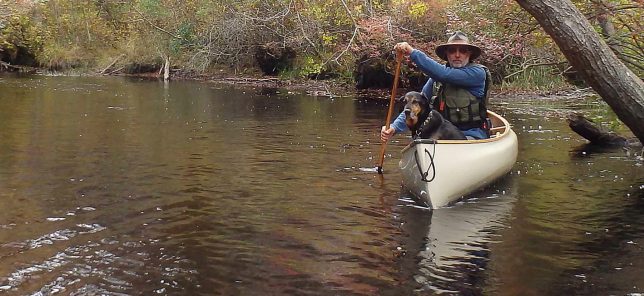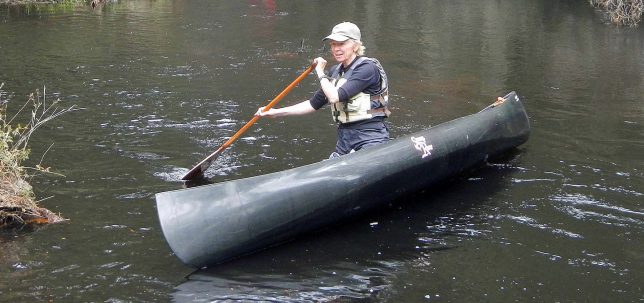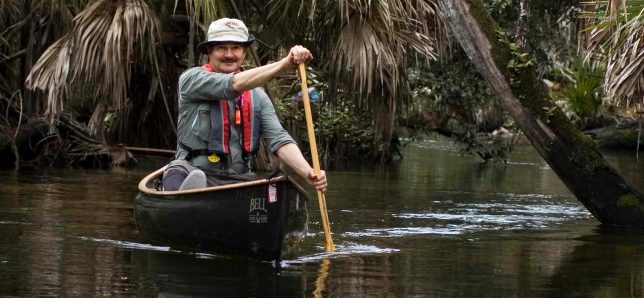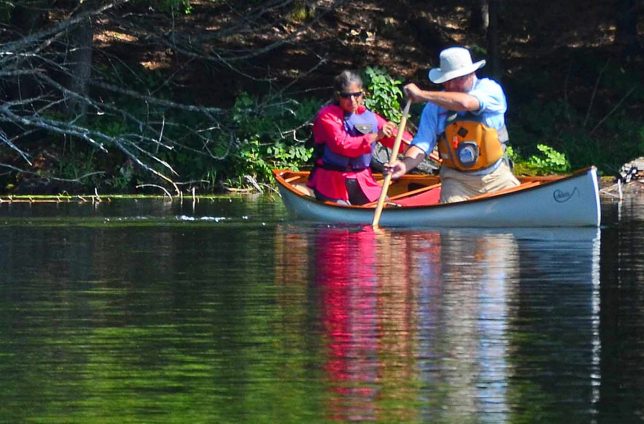Play to Practice – Practice to Play
Marc Ornstein

When paddling with friends or teaching, I’m often asked, “How much or how often do you practice”? Almost as common a question is “do you get bored while practicing”?
If I take rehearsing for a routine out of the equation, the answers are simple. How often do I practice? Rarely. Do I get bored practicing? Read on.

Let me be more specific. I practice every time I paddle, but I don’t think of it as such. I use all the techniques that I’ve learned, as often as I can. If I need to turn a bit to the offside, I’ll throw in a wedge. A sweep might work as well, but it’s not nearly as elegant and certainly less fun. If I need to turn around, I could use a series of hard Js (if there is enough room) but why not use an axle, post or a christie? Any of them will get the job done and all are more fun than a wide sweeping series of Js and forwards. If I’m lead boat in a narrow channel and want to talk with those behind me, I’ll often spin my boat around (using whatever maneuver strikes me) and paddle in reverse or cross reverse for a few moments. This way I can face my friends and maintain my heading.

Cross reverse works great for this, because I generally go transverse. From this position, I can easily see the boats to my bow (remember, I’m going backwards) and the channel to my stern without having to crank my neck too far either way. Next time you’re in a narrowing, dead end channel, try this fun trick. Wait until just before the channel narrows to just over a boat length, before spinning around. Stay in cross reverse until the end of the channel. When everyone else is figuring out how to get turned around, you’ll already be pointing the right way and look like a genius.

In “Creekin Freestyle” or everyday paddling, there’s rarely a need to heel to the gunnel, or significantly pitch the canoe, but go ahead and do it whenever conditions permit. After a while, it becomes natural. You’ll develop a feel for the edge. Just be sure to have a handy sponge. Sometimes that edge isn’t quite where it was a few moments ago.
If you’re paddling along the edge of a pretty lake, you could stay twenty feet from shore and follow a fairly straight course but you could also stay three feet from shore and maneuver with every indentation or projection of the bank. Your path becomes an endless linkage of side slips, wedges, posts, and … You get the idea.
Check out this short video, showing maneuvers being practiced… or played with… or… : https://www.youtube.com/watch?v=ASoPPgn9Fs4&t=72s
By now the answer to the second question should be clear. The child climbing the monkey bars in the playground is learning all sorts of motor and balance skills. Is the child practicing or playing? Is the child bored? You be the judge.
Be sure to read our other Cross Post articles: https://freestylecanoeing.com/blog/
and visit our Home Page: https://freestylecanoeing.com/